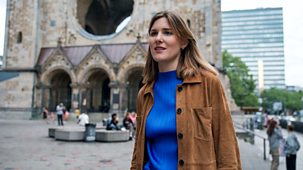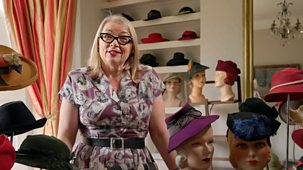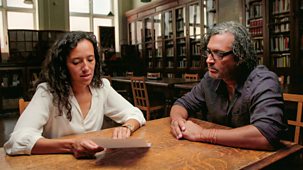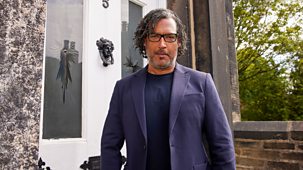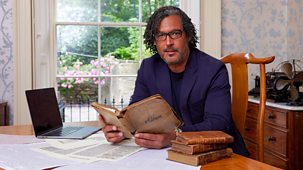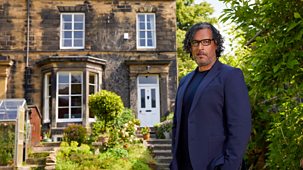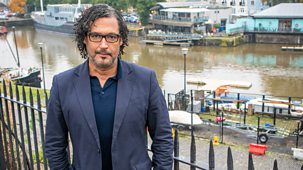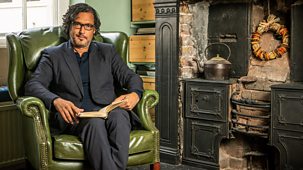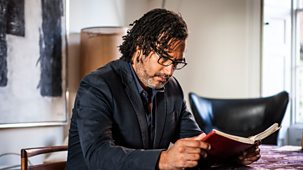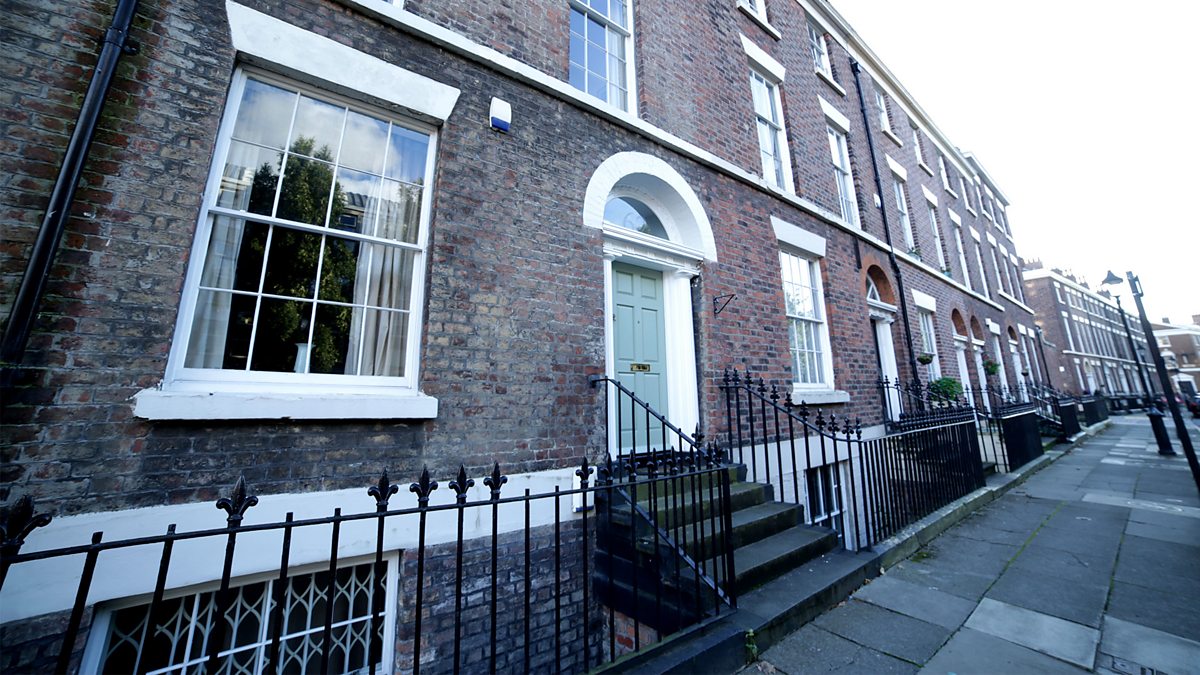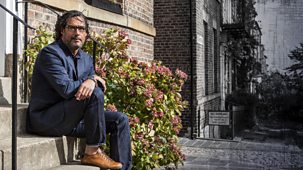
Series 2: Episode 2
In episode two, David Olusoga tracks the lives of the residents of Ravensworth Terrace through the turbulent decades from the 1860s to the 1900s.\n\nIn 1861 the house is occupied by elderly widow Mary Colbeck, living here with her 13-year-old grandson James Todd. David is curious about this setup – why is James living with his grandmother? Where are his parents? Peeling back ten years to the 1851 census, David discovers that Mary Colbeck is a well-to-do landowner. She lives on a large estate and owns three other farms. Her grandson James is one of eight children, the son of Mary’s daughter Margaret, who has married local industrialist Frederick Todd. Frederick’s family own a large glass-making factory on the banks of the Tyne. \n\nBut David discovers that this apparently respectable and well-matched couple have fallen into financial difficulty. As historian Cathy Ross explains, Newcastle’s glass-making industry is changing rapidly, and the Todds’ business fails to keep pace with the times. David then discovers a series of extraordinary newspaper articles that describe what happened next. Threatened by the forced sale of his factory, Frederick Todd attacks one of his creditors with a knife before trying to take his own life. He is thrown into gaol.\n\nThe scandal not only damages the family’s reputation, but forces Mary to sell her estate in the country and downsize to Ravensworth Terrace, in order to free up money to support her family.\n\nDavid then discovers a death certificate for Frederick Todd, who dies in 1864, aged just 46. Three years later, his wife Margaret also dies in extraordinary circumstances. Reports describe her as an alcoholic who set herself on fire while drunk. This appalling incident is witnessed by her six-year-old daughter Mary Victoria. The death and scandal have devastating effects on all Margaret’s children, now orphaned and dependent on their grandmother Mary. She does her best to support them, but sadly there is no happy ending for her grandson James, who dies of consumption aged 22, nor for little Mary Victoria, who dies in a convalescent home in Torquay, aged just ten. In 1878, Mary Colbeck dies at Ravensworth Terrace. \n\nBy now the neighbourhood is moving down the social scale. After a brief spell as lodgings, the house at Ravensworth Terrace is taken over by an organisation called the ‘Diocesan Home for Friendless Girls’. As David discovers from historian Fern Riddell, the role of this organisation is to rescue girls from the street who are at risk of falling into prostitution and trains them up for domestic service. Tracing the young women trainees, most of them orphaned, abandoned or penniless, is a difficult task. But David discovers that one young girl, Alice Coulson, who comes to live at the Home at the age of 15, has a happy ending to her story. Alice finished her training in Ravensworth Terrace, and goes to work for a wealthy family in the seaside town of Filey, where she meets her future husband.\n\nThe next resident of Ravensworth Terrace is draper Bevan Harris. David discovers that he is not just a businessman, but an enthusiastic follower of Spiritualism, the belief that the dead can communicate with the living. He even hosts seances at the house in Ravensworth Terrace, as David discovers from experts Roger Luckhurst and Pat Beesley. The reason for his unwavering belief soon becomes clear. David discovers numerous deaths in Bevan’s family, and with infant mortality accounting for around a quarter of all deaths in the 1890s and life expectancy around 46, it is little surprise that people like Bevan Harris sought out the solace of Spiritualism. Harris himself writes ‘oh what a blessing is Spiritualism in these trying circumstances’ after the premature death of his wife from cancer. \n\nIn 1894, Bevan Harris moves to Nottingham to continue his Spiritualist mission, and the house sees the arrival of new tenants. Mary Ellen Oram is a draper and her husband William a captain in the merchant navy. To find out more about them David arranges to meet their descendant, Tony Holmes. To his surprise, Tony reveals that in 1900, Mary Ellen is committed to the local lunatic asylum, suffering from ‘melancholia’, what would today be termed depression. Money worries are behind Mary Ellen’s mental health problems. By 1898 her business had failed and her husband loses his job after being found guilty of overloading his ship with coal.\n\nAnd as Deborah Sugg Ryan explains, Mary Ellen opened her business at exactly the wrong time, when high street drapers were facing stiff competition from new department stores. Mary Ellen is institutionalised for two years, and, David discovers, that she is not the only family member to spend time there. Her husband William was sent to the asylum after suffering from a stroke. Unlike his wife, who was released after two years, the unfortunate William Oram died just eight months after his admission.
Source: BBC 2
Most recent episodes of A House Through Time
A House Through Time
Series 5: Two Cities At War: Episode 4
David Olusoga traces the residents’ stories from winter 1942 to the end of the war. In the shattered ruins of Berlin, not all the residents survive.\n\nAs the Berlin resid ...
15-11-2024
BBC 2
A House Through Time
Series 5: Two Cities At War: Episode 3
It’s 1940, and in London, the threat of invasion by Germany has become very real. Montagu Mansions resident Timothy Corsellis begins training as an RAF pilot, but begins t ...
08-11-2024
BBC 2
A House Through Time
Series 5: Two Cities At War: Episode 2
By 1936, the ruling Nazi Party is transforming the lives of the residents at the building in Berlin. One new resident, academic Paul Dittel, has returned to Germany to join the ...
01-11-2024
BBC 2
A House Through Time
Series 5: Two Cities At War: Episode 1
David Olusoga traces the lives of residents of two apartment blocks - Montagu Mansions in Marylebone, London, and 72 Pfalzburger Strasse in Wilmersdorf, Berlin - to tell the sto ...
23-10-2024
BBC 2
A House Through Time
Series 4: Episode 4
The final episode opens at the outbreak of the Second World War, and our house is home to the Wood family. While father John serves as an ARP warden, teenage son Geoffrey joins ...
13-06-2024
BBC 2
A House Through Time
Series 4: Episode 3
By 1913, Number 5 is home to respectable couple Frederick and Louisa Pryce Lewis. From a clue in the family photo album, David follows the trail of their younger son Walter, tra ...
30-05-2024
BBC 2
A House Through Time
Series 4: Episode 2
Digging into the affairs of the house’s next resident, Benjamin Wild, David discovers a factory owner with a history of questionable business dealings, including an employ ...
23-05-2024
BBC 2
A House Through Time
Series 4: Episode 1
David Olusoga discovers our house’s first resident - idealistic Victorian lawyer William Bruce, who tries and fails to save the life of a man convicted to hang for murder. ...
16-05-2024
BBC 2
A House Through Time
Series 3: Episode 4
The final episode of the series sees David tracing the lives of 10 Guinea Street’s occupants through World War II to the present day, discovering stories of love, loss and ...
08-06-2023
BBC 2
A House Through Time
Series 3: Episode 3
In this episode, David follows the house’s fortunes from the 1880s through to the end of the First World War, as it slides down the social scale and moves into multiple oc ...
01-06-2023
BBC 2
Most popular episodes of A House Through Time
A House Through Time
Series 3: Episode 2
David Olusoga investigates the residents of Number 10 Guinea Street from the end of the 18th century until the 1870s. They are an extraordinarily diverse bunch, from a middle-cl ...
25-05-2023
BBC 2
A House Through Time
Series 2: Episode 3
In this episode, David Olusoga follows the residents of the house through the early 20th century. The house is now being run as a boarding house by 41-year-old single mum Grace ...
28-10-2021
BBC 2
A House Through Time
Series 1: Episode 1
This series tells a story of Britain spanning a period of seismic social change from the 1840s to the present day, through the prism of a single-terraced house in Liverpool. Pre ...
04-07-2020
BBC 2
A House Through Time
Series 5: Two Cities At War: Episode 1
David Olusoga traces the lives of residents of two apartment blocks - Montagu Mansions in Marylebone, London, and 72 Pfalzburger Strasse in Wilmersdorf, Berlin - to tell the sto ...
23-10-2024
BBC 2
A House Through Time
Series 5: Two Cities At War: Episode 2
By 1936, the ruling Nazi Party is transforming the lives of the residents at the building in Berlin. One new resident, academic Paul Dittel, has returned to Germany to join the ...
01-11-2024
BBC 2
A House Through Time
Series 2: Episode 4
The final episode begins in 1946. The householders are John Walter and Florence Smyth. They live here with their daughter Myra and rent rooms to lodgers. A collection of family ...
04-11-2021
BBC 2
A House Through Time
Series 4: Episode 1
David Olusoga discovers our house’s first resident - idealistic Victorian lawyer William Bruce, who tries and fails to save the life of a man convicted to hang for murder. ...
16-05-2024
BBC 2
A House Through Time
Series 2: Episode 2
In episode two, David Olusoga tracks the lives of the residents of Ravensworth Terrace through the turbulent decades from the 1860s to the 1900s.\n\nIn 1861 the house is occupie ...
14-10-2021
BBC 2
A House Through Time
Series 5: Two Cities At War: Episode 3
It’s 1940, and in London, the threat of invasion by Germany has become very real. Montagu Mansions resident Timothy Corsellis begins training as an RAF pilot, but begins t ...
08-11-2024
BBC 2
A House Through Time
Series 5: Two Cities At War: Episode 4
David Olusoga traces the residents’ stories from winter 1942 to the end of the war. In the shattered ruins of Berlin, not all the residents survive.\n\nAs the Berlin resid ...
15-11-2024
BBC 2


